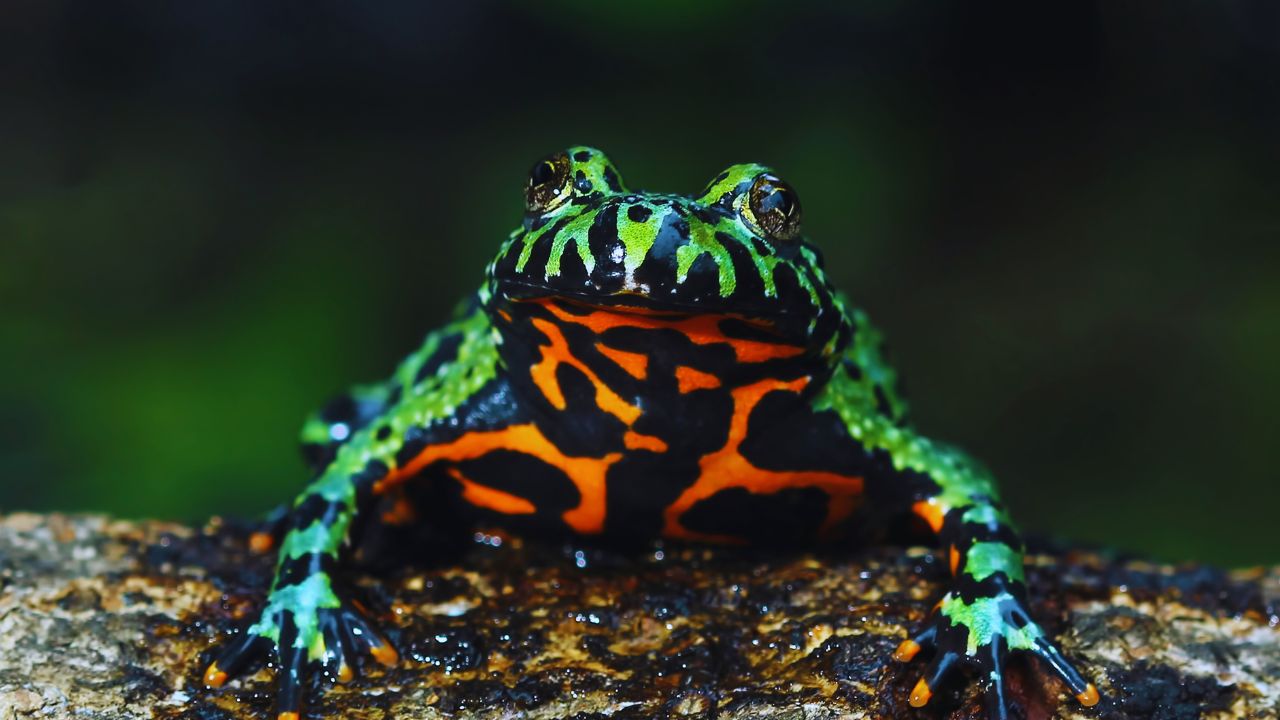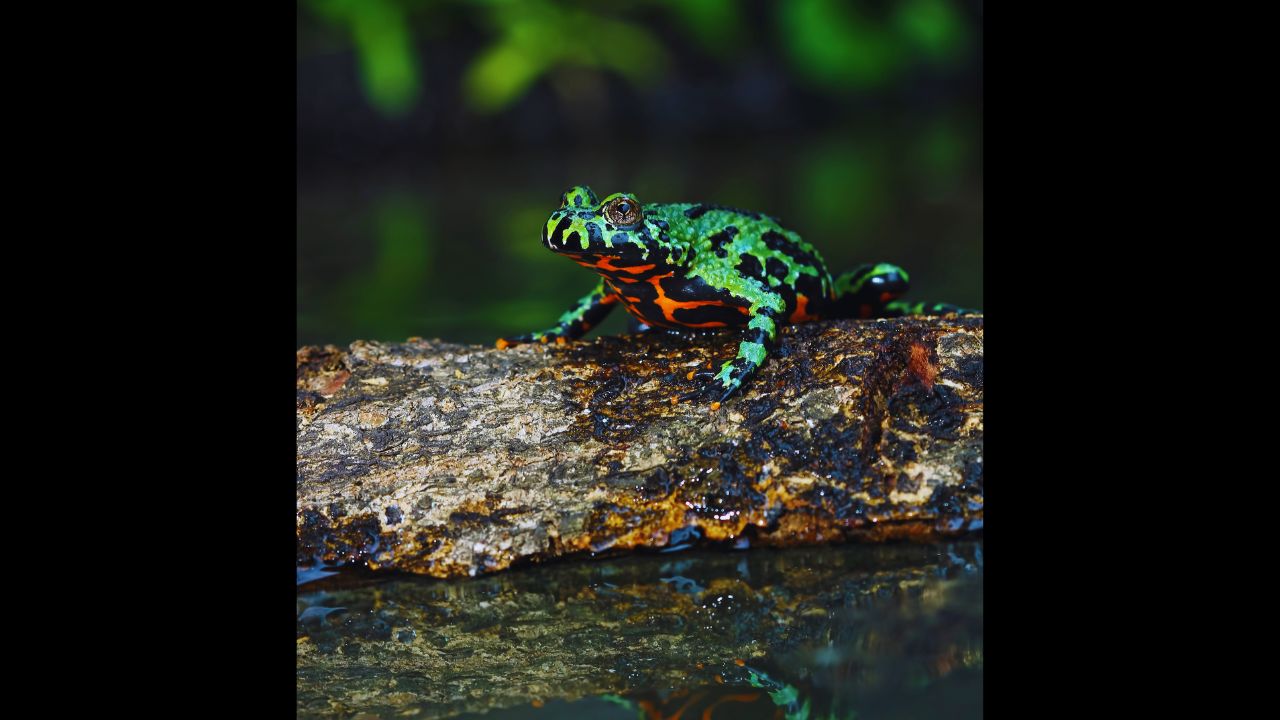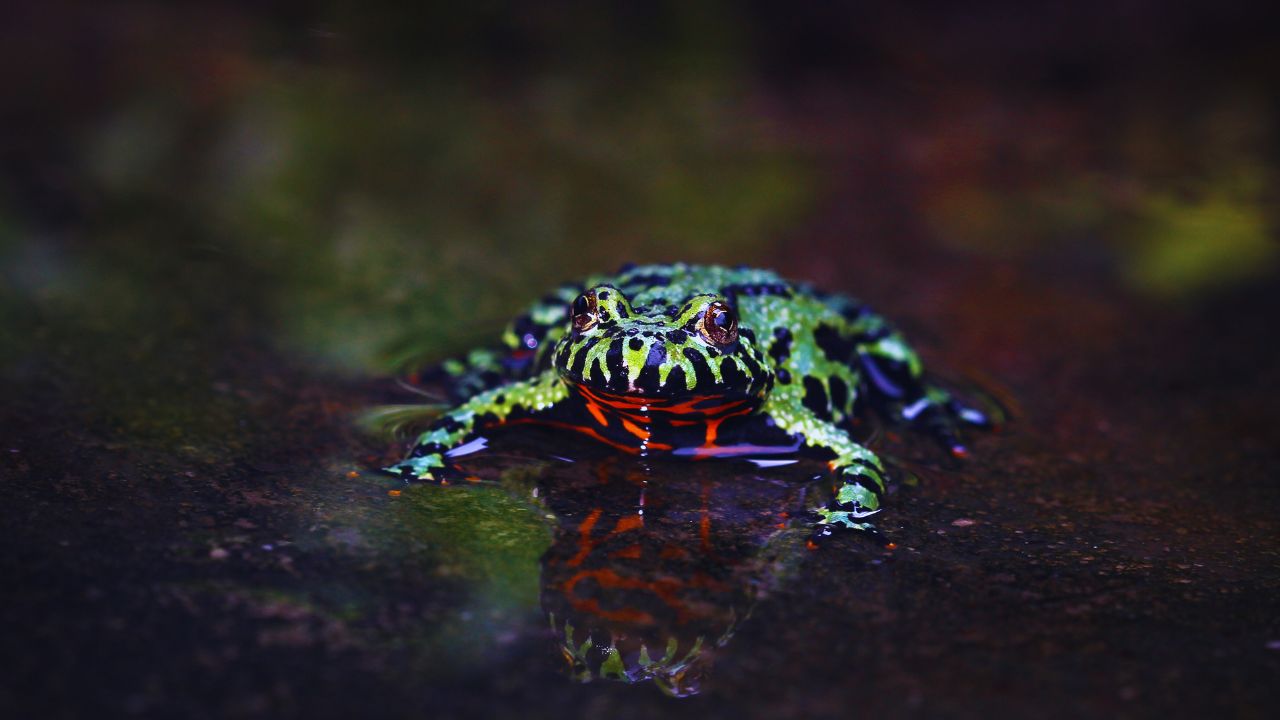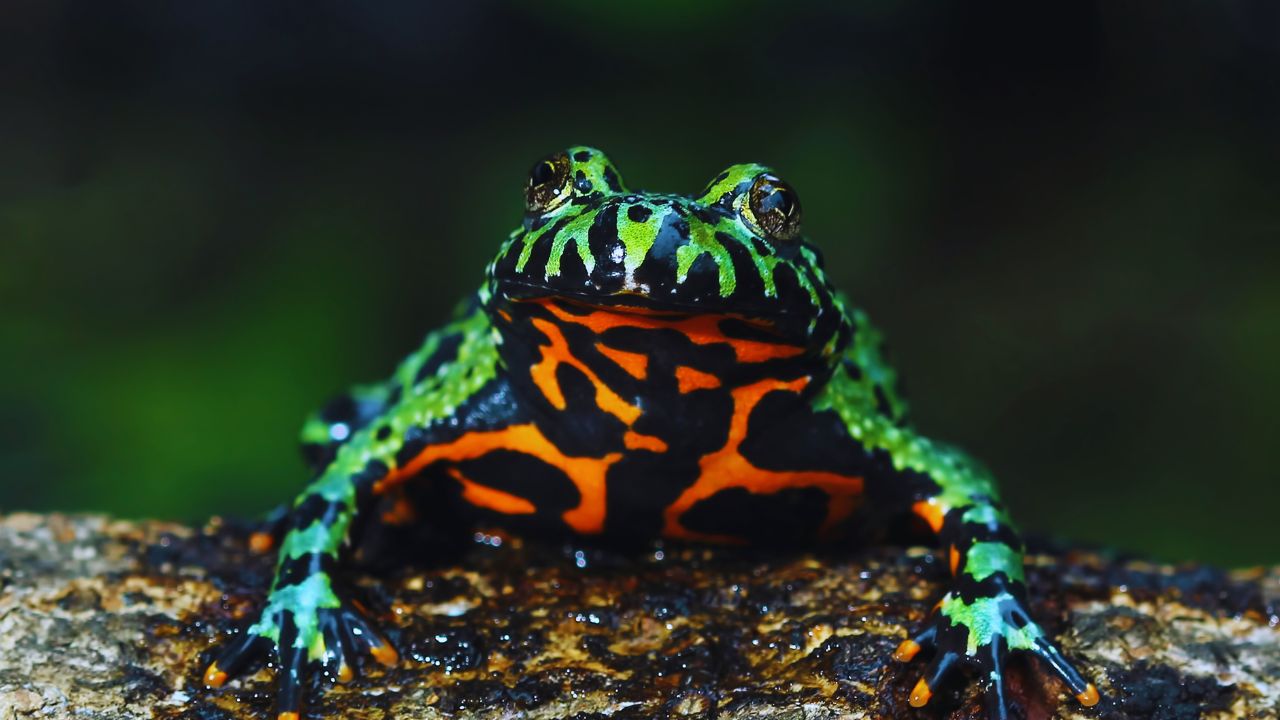Both casual viewers and herpetologists will find the fascinating amphibian known as Bombina—the fire belly toad—interesting. Many scientific and ecological researchers are interested in this little, vivid toad because of its remarkable look and amazing behaviours. This page explores the fire belly toad’s special qualities, natural background, and ecological importance, therefore offering a comprehensive knowledge of this amazing animal.

Physical Characteristics of Fire-Bellied Toads
| Feature | European Fire-Bellied Toad (Bombina bombina) | Asian Fire-Bellied Toad (Bombina orientalis) |
|---|---|---|
| Size | 4-7 cm in length | 4-6 cm in length |
| Colouration (Dorsal) | Brown or grey with occasional black spots | Brown or grey with black spots |
| Colouration (Ventral) | Bright red or orange with black markings | Bright orange with black spots |
| Skin Texture | Smooth with some warts | Smooth with fewer warts |
| Leg Length | Short and robust | Short and robust |
| Defensive Mechanism | Aposematic coloration and toxin secretion | Aposematic coloration and toxin secretion |
1. Species Diversity and Taxonomy
The genus Bombina, under the family Bombinatoridae, houses the flaming belly toad. This genus consists of various species with different traits and adaptations. Two somewhat well-known species are the Asian fire belly toad (Bombina orientalis) and the European fire belly toad (Bombina bombina). Though they have a popular name, these toads are not real toads in the conventional sense; rather, their unique traits classify them as members of the old-world toad family.
2. unique morphology
The fire belly toad’s brilliant colouration is among its most arresting characteristics. Usually subdued brown or grey, the toad’s dorsal side offers good hiding from predators. Its ventral side, on the other hand, is generally vivid, blazing red or orange and often has black or dark marks. Aposematic colouration—that is, the signal to possible predators about the toxicity of the toad—is this brilliant hue. A major distinguishing characteristic of the fire belly toad is the bland dorsal side contrasted with bright ventral sides.

Adults of the quite little fire belly toad range in length from 4 to 7 cm. Their small stature belies a strong physique with short legs that help to define their unique hopping walk. The wet and porous skin of the toad helps breathing and water absorption—qualities necessary for its existence.
3. Habitat and Distribution
From temperate woods to marshes, fire belly toads abound in a variety of environments. Native to Eastern Europe, including Poland, Hungary, and Romania, the European fire belly toad is On the other hand, the Asian fire belly toad is native to Japan, Korea, and China, among other areas of Asia. These toads like slow-moving streams, ponds, and marshy areas—environmentally rich in moisture. Their preferred habitat reflects their demand for a wet environment, which is very vital for their activities of reproduction and growth.
| Aspect | European Fire-Bellied Toad (Bombina bombina) | Asian Fire-Bellied Toad (Bombina orientalis) |
|---|---|---|
| Native Range | Eastern Europe (Poland, Hungary, Romania) | China, Korea, Japan |
| Preferred Habitat | Temperate forests, slow-moving streams, ponds | Moist forests, slow-moving streams, ponds |
| Breeding Sites | Shallow ponds, marshes | Shallow ponds, marshes |
| Temperature Range | 5°C to 25°C | 10°C to 28°C |
| Humidity Requirements | High humidity in breeding areas | High humidity in breeding areas |
4. Adaptations in Behaviour
Fire belly toads show a variety of fascinating actions meant for their survival. Usually occurring in the spring and early summer, the breeding season sees these toads make complex mating sounds. Males create a unique acoustic environment in their habitats by attracting females with their distinctive, melodic croaking sound. Men may also participate in competitive calling to establish dominance; the cries vary in pitch and length.

Apart from their vocalisations, fire belly toads use a spectrum of defensive actions to discourage predators. Threatened, the toad will take a unique defence position, arching its back and revealing its brilliantly coloured belly. Predators are warned by this exhibit that the toad may be poisonous. Should a predator be undaunted, the toad may produce a poisonous, bitter chemical from its skin, therefore deterring any efforts at consumption.
5. Reproduction and Life Cycle
Fire belly toads’ amazing technique of reproduction consists of several phases. Usually occurring in watery habitats, breeding is when the males call to draw in females. Once a couple has married, the female lays her eggs in water, usually in strings or clusters connected to submerged plants. Little and transparent, the eggs become tadpoles in a few days.
Before emerging as young toads, tadpoles go through an amazing transformation over many developmental phases. Among the major physiological changes involved in the metamorphosis process are tail absorption and limb growth. A necessary step in the toad’s life cycle, this metamorphosis enables its adaptation from an aquatic to a terrestrial habitat.
6. Conservation Status and Challenges
Fire belly toads have many environmental hazards that can affect their population, even though they are not yet categorised as endangered. A major issue is habitat loss brought on by urbanisation and agricultural development, as it lowers the availability of appropriate breeding and feeding places. Furthermore, compromising their habitats are pollution and climate change, which influence temperature conditions and water quality.

The long-term survival of fire belly toads depends on conservation activities. Essential elements in maintaining these amazing amphibians include safeguarding and restoring their natural habitats as well as putting policies to reduce pollution and climate change into action. Additionally helping to preserve fire belly toads is public knowledge of their ecological significance and education on this.
7. Part in ecosystems
In their habitats, fire belly toads are very important and help to balance many ecological processes. Being insectivores, they assist in regulating insect numbers, thus limiting overgrowth and preserving ecological equilibrium. Their sensitivity to variations in water quality and habitat conditions suggests the state of health of these ecosystems as well.
Moreover, other predators, including birds, snakes, and bigger amphibians, depend heavily on fire belly toads as food. Their poison and defensive actions naturally discourage possible predators, therefore affecting the dynamics of predator-prey in their habitats.
8. Popularity and Captive Attention
Because of their distinctive look and quite minimal care needs, fire belly toads are somewhat sought after in the pet market. In captivity, they need a habitat that resembles their native surroundings with access to land and water. Appropriate temperature and humidity levels, a balanced diet, and frequent health checks are part of proper care.

Their popularity as pets has sparked more research in their biology and conservation, therefore helping to improve knowledge of their natural background and behaviour. Prospective owners should be aware of the particular requirements of fire belly toads and make sure they can provide proper surroundings for their well-being, however.
Conservation Status and Threats
| Threat/Conservation Aspect | European Fire-Bellied Toad (Bombina bombina) | Asian Fire-Bellied Toad (Bombina orientalis) |
|---|---|---|
| Current Conservation Status | Not classified as endangered | Not classified as endangered |
| Major Threats | Habitat loss, pollution, climate change | Habitat loss, pollution, climate change |
| Habitat Loss Causes | Urbanisation, agricultural expansion | Urbanisation, deforestation, agricultural expansion |
| Pollution Impact | Affects water quality and breeding sites | Affects water quality and breeding sites |
| Conservation Efforts | Habitat protection, pollution control | Habitat protection, pollution control |
Captivating creatures with distinctive traits and behaviours, the fire belly toad is a topic of great curiosity. From its vivid colouration and defensive adaptations to its part in ecosystems and conservation efforts, the fire belly toad provides insightful analysis of amphibian biology and ecology. Studying and conserving these amazing species will help us to appreciate their role in the natural world and guarantee their survival for the next generations.





